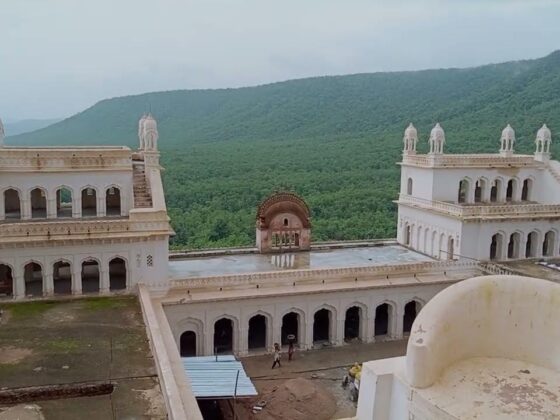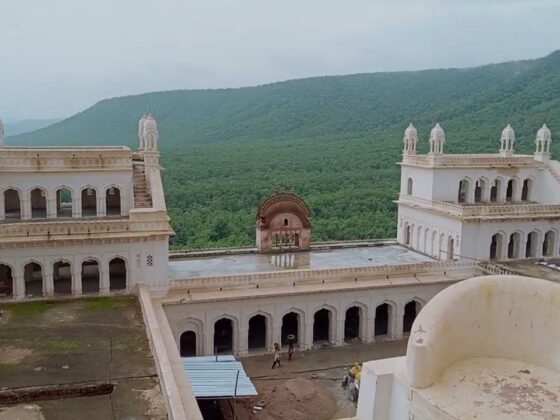Princess Diya Kumari – Bridging Royal Legacy and Public Service

Early Life and Royal Heritage
Princess Diya Kumari was born on 30 January 1971 in Jaipur. She is the only child of Brigadier Sawai Bhawani Singh, a decorated war hero awarded the Maha Vir Chakra, and Maharani Padmini Devi of Sirmur. Her grandfather, Maharaja Man Singh II, served as the last ruling sovereign of Jaipur.
Although she came from a royal background, Diya Kumari experienced a grounded and disciplined childhood. Due to her father’s army postings, the family frequently relocated between Delhi and Mumbai, where they lived among other military households.
Her education reflects a well-rounded upbringing. She attended Modern School in Delhi, G.D. Somani Memorial School in Mumbai, and later, Maharani Gayatri Devi Girls’ School in Jaipur. Eventually, she pursued a Diploma in Decorative Arts from Chelsea College of Arts, London. Additionally, Amity University, Jaipur, honored her with an honorary Ph.D., recognizing her contributions to culture and society.
Family and Personal Life
In 1997, Diya Kumari married Narendra Singh, an employee of the royal household. Their marriage drew criticism within Rajput society because both belonged to the same gotra, a union traditionally discouraged. This controversy also created internal rifts within the royal family.
Together, they had three children:
-
Maharaja Padmanabh Singh (b. 1998), now a globally recognized polo player and youth icon
-
Princess Gauravi Kumari
-
Lakshya Raj Singh
However, the couple’s relationship deteriorated over time. They began living separately and eventually finalized their divorce in 2018.
From Royalty to Politics
Diya Kumari made her political debut in September 2013, when she joined the Bharatiya Janata Party (BJP) during a large rally in Jaipur. Notably, this event featured prominent leaders like Narendra Modi, Rajnath Singh, and Vasundhara Raje.
Shortly after entering politics, she contested the 2013 Rajasthan Assembly elections and won from Sawai Madhopur. In 2019, she achieved a landslide victory in the Rajsamand Lok Sabha constituency, defeating her opponent by a margin of over 551,000 votes. This win stood out as one of the largest electoral margins in the country that year.
Later, in the 2023 state assembly elections, she returned to state politics and secured the Vidhyadhar Nagar seat in Jaipur, reaffirming her popularity.
Deputy Chief Minister of Rajasthan
On 15 December 2023, the Rajasthan government appointed Diya Kumari as Deputy Chief Minister, alongside Prem Chand Bairwa.
Unusually, she holds a powerful combination of cabinet portfolios, including:
-
Finance
-
Tourism
-
Women and Child Welfare
-
Public Works Department (PWD)
Previously, these portfolios were mostly held by the Chief Minister. Yet, Diya Kumari took charge confidently. Since her appointment, she has conducted civic inspections across Jaipur. She has addressed public issues such as encroachments, sanitation, drainage, and urban infrastructure. Furthermore, she initiated plans for new parks and road improvements in her constituency.
Heritage Preservation and Philanthropy
Beyond politics, Diya Kumari remains deeply involved in cultural preservation. As the Secretary and Trustee of both the Maharaja Sawai Man Singh II Museum Trust and the Jaigarh Fort Charitable Trust, she safeguards Jaipur’s royal heritage. Under her leadership, the City Palace Museum continues to attract global attention.
She also runs two educational institutions:
-
The Palace School
-
Maharaja Sawai Bhawani Singh School
In addition, her Princess Diya Kumari Foundation (PDKF) empowers rural women through handicrafts and social entrepreneurship. The foundation’s products are sold at the PDKF Store, as well as showcased at international platforms like Royal Fables.
A Modern Royal with a Global Persona
Her son, Padmanabh Singh, often dubbed “India’s Instagram Prince,” has played a major role in revitalizing royal engagement with the modern world. Through luxury travel experiences, fashion collaborations, and social media, he extends the family’s legacy internationally.
Significantly, many of his projects align with Diya Kumari’s philanthropic initiatives, creating a shared vision for the future. Together, they are shaping a narrative where tradition blends seamlessly with innovation and entrepreneurship.
Conclusion
Princess Diya Kumari stands as a rare blend of tradition and transformation. As a political leader, cultural ambassador, and champion for women, she occupies a unique position in Rajasthan’s history.
By combining her royal roots with public service, she continues to shape a future where legacy meets leadership — proving that modern India still has room for monarchy, not by power, but by presence, purpose, and progress.






